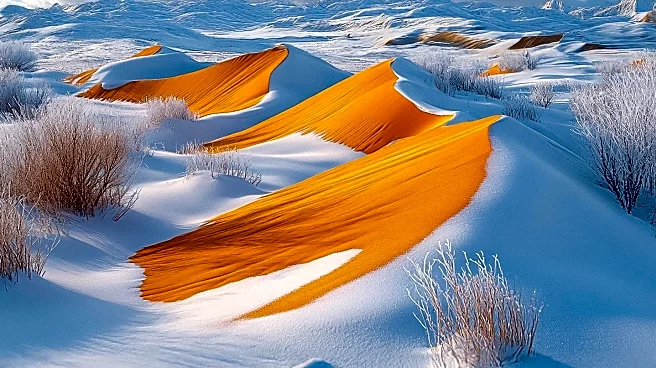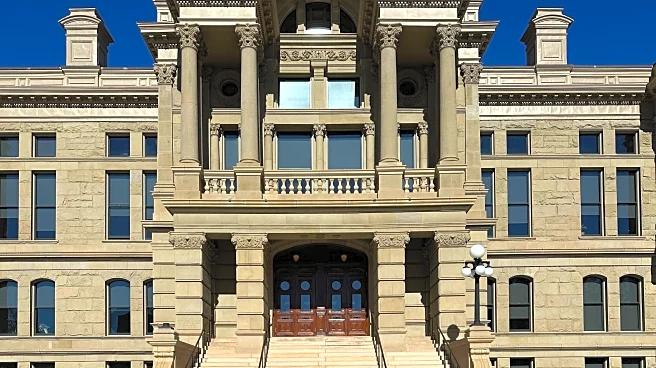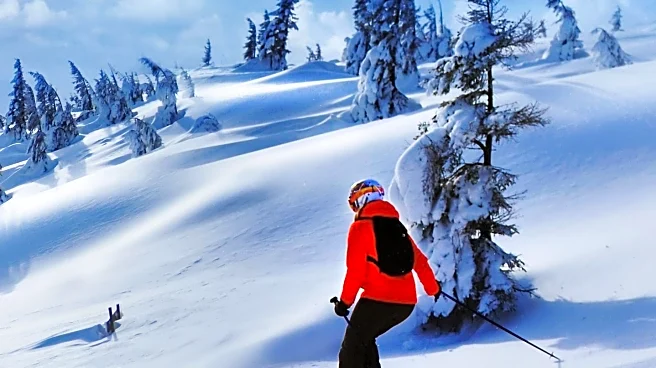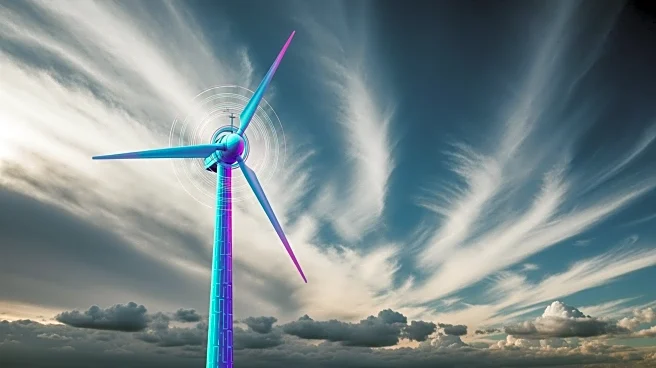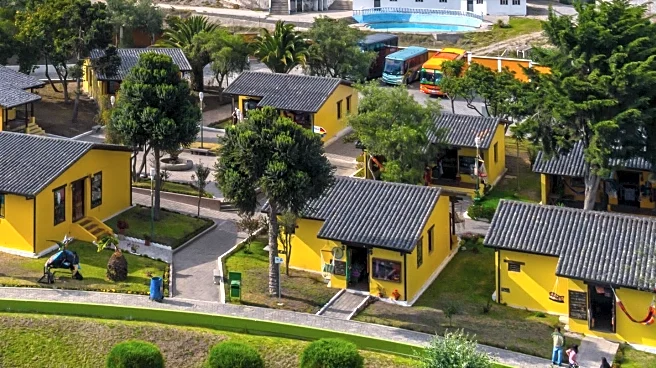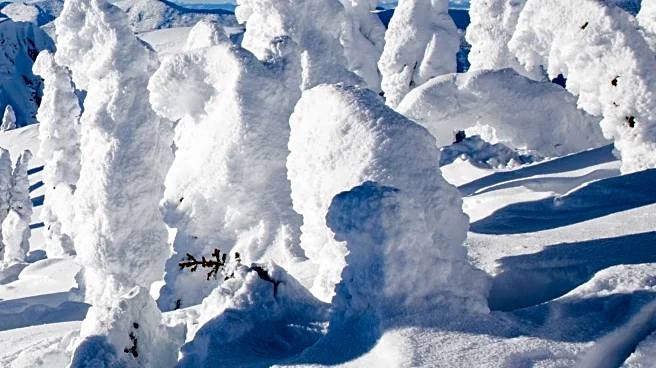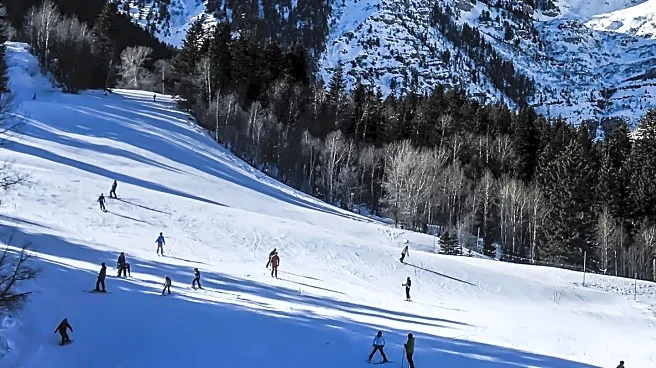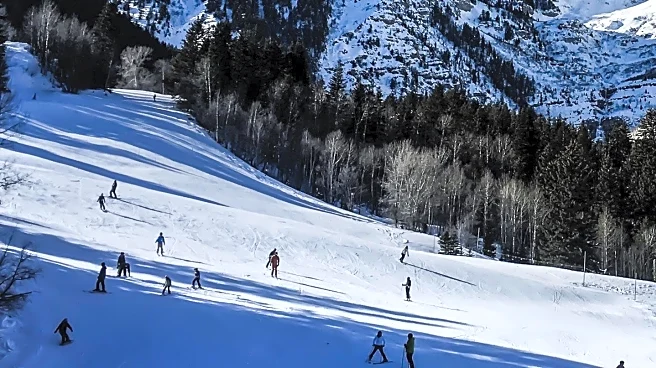What's Happening?
Powder Mountain, a ski resort in Utah's Ogden Valley, is emerging as a significant site for land art with the unveiling of two major posthumous installations. The works, Nancy Holt's 'Starfire' and Nobuo Sekine's 'Phase of Nothingness – Stone Stack,'
have been realized at the resort, which aims to become a 'skiable art museum.' 'Starfire,' originally conceived in 1986, features eight fire pits arranged to mirror the Big Dipper constellation, creating a cosmic reflection on human existence. Sekine's 'Phase of Nothingness,' a concept from the 1970s, has been brought to life with a towering stack of boulders, symbolizing the temporal and topological relationships with the environment. These installations are part of a broader effort by Powder Mountain to integrate art into its landscape, supported by a $100 million investment from Netflix co-founder Reed Hastings.
Why It's Important?
The transformation of Powder Mountain into a land art hub represents a significant cultural and economic development for the region. By integrating art into the natural landscape, the resort not only enhances its appeal to tourists but also contributes to the preservation and promotion of land art, a movement with deep roots in Utah. This initiative could attract art enthusiasts and tourists, boosting local tourism and economy. Additionally, the collaboration with the Dia Art Foundation, known for its stewardship of land art, underscores the resort's commitment to maintaining high artistic standards. The project also highlights the potential for art to intersect with recreational activities, offering a unique experience that blends cultural enrichment with outdoor adventure.
What's Next?
As Powder Mountain continues to develop its art installations, the resort plans to expand its infrastructure to accommodate year-round visitors. This includes building lodging and dining facilities to support increased tourist traffic. The partnership with the Dia Art Foundation may lead to a collection-sharing program, further enriching the resort's offerings. The resort's efforts to create a 'skiable sculpture park' could set a precedent for other recreational areas to incorporate art into their landscapes, potentially influencing the future of tourism and land art. The success of this initiative will depend on its ability to attract visitors and maintain the integrity of the artworks in a natural setting.
Beyond the Headlines
The integration of land art into Powder Mountain raises questions about the commercialization of art and its impact on the environment. While the resort's efforts to preserve and promote land art are commendable, there is a delicate balance between attracting tourists and maintaining the integrity of the natural landscape. The involvement of high-profile investors and art institutions suggests a growing interest in the intersection of art and commerce, which could influence future art projects. Additionally, the realization of these posthumous works highlights the enduring legacy of artists like Nancy Holt and Nobuo Sekine, whose visions continue to inspire and challenge perceptions of art and nature.
